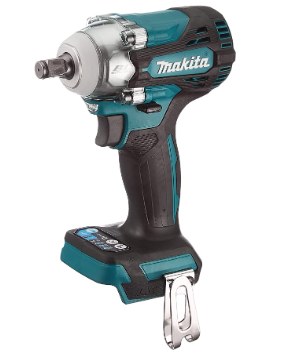it’s easy to overlook the unsung heroes of the industry. Scaffolding tools, those unassuming yet essential instruments that assist workers in reaching new heights and executing intricate tasks, are often the backbone of every successful project. While they may not receive the spotlight they deserve, these tools are the heartbeat of efficiency, ensuring that complex tasks are completed safely and with precision.

Makita DTW300Z
The DTW300Z is a cordless Impact Wrench, powered by 18V Li-ion LXT slide type battery (not included) to supply energy to the powerful 18V brushless motor, with variable speed controlled by trigger and electronic 4 stage impact power selection, to deliver up to 4,000 ipm

Makita DTW302Z
The DTW302Z is a cordless Impact Wrench, powered by 18V Li-ion LXT slide type battery (not included), to supply energy to the powerful 18V brushless motor, with variable speed controlled by trigger, to deliver up to 4,000 ipm, 3,200 rpm

Milwaukee MILM18BIW120
Compact ½″ impact wrench measures 155 mm in length making it ideal for working within confined spaces, High performance 4-pole motor delivers maximum power whilst maximising the power to weight ratio, REDLINK™ overload protection electronics in tool and battery pack deliver best in class system durability
Other Scaffolding Tools

Scaffolding Leather Tool Belt 5 IN 1 Edition
Large Size Scaffolding Tools Belt Large Tape Measure Holder Double Spanner and Single Spanner Level Holder Xlarge Pure Leather Belt Iron Press Stud 19/21 Spanner Double

Scaffolding Steel Errect Spanner
19/21 mm Socket Head with 24 tooth Ratchet Mechanism Claw Hammer Head and Pry Bar Handle Chrome Vanadium
Scaffolding is an essential component in the construction and maintenance industry, providing a safe and efficient means for workers to access elevated areas. Scaffolding tools are indispensable for creating stable and secure scaffolding structures that ensure the safety of workers. In this article, we will explore the various types of scaffolding tools, their functions, and the importance of using them in construction projects.
- Scaffolding Basics
Before delving into scaffolding tools, it’s crucial to understand the fundamental principles of scaffolding. Scaffolding is a temporary structure erected at a construction site to support workers and materials during construction, repair, or maintenance tasks. It offers a safe and convenient way for workers to access heights that would otherwise be challenging or hazardous to reach.
- Types of Scaffolding Tools
A. Scaffolding Frames: Scaffolding frames are the building blocks of any scaffold structure. They are typically made of steel or aluminum and come in various sizes to create the necessary height and width for the job. These frames provide the primary support for the scaffold.
B. Cross Braces: Cross braces are diagonal bars that connect two opposing scaffold frames. They enhance the stability and strength of the scaffold by preventing lateral movement and sway.
C. Planks and Decking: Scaffolding planks or decking are platforms that provide a surface for workers to stand on while they perform their tasks. These planks are typically made of wood, steel, or aluminum and come in various lengths and widths.
D. Guardrails and Toeboards: Safety is paramount in scaffolding. Guardrails and toeboards are essential for preventing falls and injuries. Guardrails are installed around the working platform, while toeboards are placed at the edge to prevent tools and materials from falling.
E. Couplers and Clamps: Couplers and clamps are used to secure various scaffold components together. These connections ensure that the scaffold is stable and safe for use.
F. Adjustable Legs and Screw Jacks: Adjustable legs and screw jacks are used to level the scaffold on uneven ground. They allow for precise adjustments to ensure the scaffold is stable and safe.
G. Hoists and Pulleys: Hoists and pulleys are used to lift materials and equipment to the desired working height. They are essential for productivity and efficiency on construction sites.
H. Ladders and Stairs: Ladders and stairs provide access to the scaffold structure. They come in various styles, such as portable ladders and integral scaffold stairs.
I. Tool Trays and Tool Belts: These accessories keep tools and equipment organized and within reach while working on the scaffold. Tool trays can be attached to the scaffold, while tool belts are worn by workers.
- The Importance of Scaffolding Tools
Scaffolding tools are indispensable in construction for several reasons:
A. Safety: Scaffolding tools, such as guardrails, toeboards, and stable connections, are critical for preventing accidents and falls. They create a safe working environment for construction workers.
B. Efficiency: Scaffolding tools like hoists, pulleys, and platforms significantly improve work efficiency. They allow workers to access various heights and move materials easily.
C. Precision: Tools like adjustable legs and screw jacks ensure that the scaffold is level and stable, enabling precise work in even the most challenging environments.
D. Organization: Tool trays and belts keep tools and equipment organized, reducing downtime and improving productivity.
- Conclusion
Scaffolding tools are the backbone of safe and efficient construction projects. Whether it’s building frames, securing connections, providing access, or enhancing safety, these tools play a crucial role in the construction industry. By understanding the various types of scaffolding tools and their functions, construction professionals can ensure the success of their projects while prioritizing the safety of their workers.